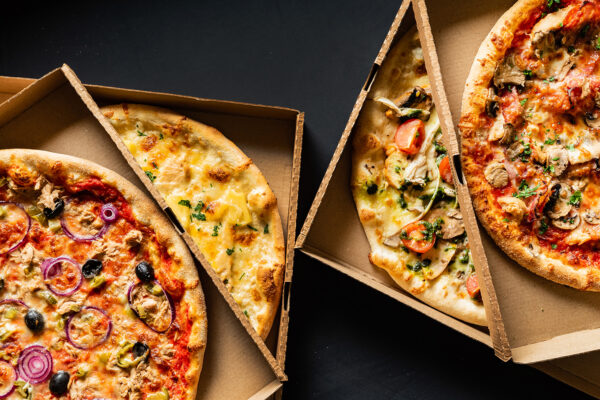Indian cuisine has never quite gotten its due among American consumers. Yet.
With increased availability at retail, changes in consumers’ diets, and a few modern twists, Indian fare is poised for its time in the spotlight. Although Indian, like many other global cuisines, is still unfamiliar to some Americans, a tipping point could be just around the culinary corner, thanks to innovative second- and third-generation Indian-American chefs developing new dishes, unique concepts, and Indian entrepreneurs introducing crave-worthy mashup items available to a growing slice of the population.
Consider a comparison to Thai cuisine, which was largely unknown to U.S. consumers not too long ago: Excluding food trucks and ghost restaurants, there are 7,515 Thai restaurants in the U.S., according to our Firefly database, while the number of Indian restaurants stands at 5,661. But there are far more ghost kitchens that serve Indian cuisine than Thai (2,222 vs. 355), which when taken into consideration, puts Indian and Thai more on par.
Notably, Thai is further along on Datassential’s Menu Adoption Cycle (MAC) in Proliferation and loved or liked by a greater percentage of consumers (according to FLAVOR, 42% of consumers love it or like it) compared to Indian (which is in Adoption and loved or liked by 30% of consumers), but like Thai, Indian food could follow a similar trajectory and make the same climb in awareness.
However, there are a number of Indian dishes that, provided they have clear, approachable descriptions, could find more opportunity on menus.
“I’m an optimist, so I do think one day Indian food can be at least as well known as Thai,” Conaghan said.
And it may be the perfect time: consumers are increasingly loving spicy and plant-based food, two tenets of Indian cuisine, and they’re also paying more attention to global flavors.
Here a few other ways Indian food could grow in favor among U.S. consumers:
What’s in a name?
A sticking point for many consumers seeing a new menu item they’ve never tried is the name. It can be intimidating to try new foods, let alone a flavor profile that’s unfamiliar. Ras Malai, for example, is likely not widely known by U.S. consumers (only 13% know it, according to FLAVOR.) But if an operator instead calls it Indian tres leches, as Bhoomi Modern Indian Grill in Chicago has done, you can stir up more consumer interest that translates into trial.
A longer-standing example is chicken makhani, a curry comprised of marinated chicken in a spiced and buttery tomato gravy, commonly known just as “butter chicken” in the U.S.
Operators can also consider ways to make traditional Indian concepts more relatable. For example, U.S. consumers are largely unfamiliar with the Indian dish Amritsari fish (it consists of fried fish seasoned with ginger and garlic and coated in a light, crispy crust), but they are familiar with the classic fish & chips concept, so comparing the two could help increase interest and approachability.
Classic mashups
Beyond marketing and name recognition, there are other ways to make Indian food appetizing to both newbies and lovers of the cuisine, like pairing Indian flavors with dishes that most consumers will recognize. While wraps are already plentiful in Indian cuisine, naan or flatbread could also be used as the vessel for a mashup dish, like tacos or pizza. Or just about any sweet or spicy chicken dish – of which there are many across Indian cuisine – could be reimagined as a saucy sandwich.
Catching – and expanding on – the plant-based wave
Many Indian dishes like dal are perfectly suited to please those consumers who are looking to incorporate more plant-based meals into their diet. Indian food is very vegetarian friendly and many dishes can be made with varied proteins. Dishes like butter chickpeas, for example, are starting to catch on. And Indian food is not only catching the plant-based wave, but also increasing its exposure to many as traditional ingredients like jackfruit grow in popularity.
Removing the borders
We mean borders in two ways here: first, inventive operators have already started to expand their menus beyond the core, familiar Indian dishes – and begun to bring in more of a unique and expanded range of dishes that will keep consumers engaged and coming back for a deeper, more varied look at the cuisine.
But Indian restaurants expanding outside of traditional neighborhoods will also help the cuisine gain traction. Take L.A.’s Pijja Palace, for example, which brought Indian flavors to a bar & grill concept, with menu items including Indian spins on pizza, pasta, and wings.
And when there’s an Indian restaurant in a city’s restaurant row or other popular spot, it becomes more top-of-mind and better incorporated into consumers’ everyday lives.
What’s more, a “modern” take on food can mean small plates that consumers can choose without the commitment of a full dish. Introducing new dishes with Indian roots to a wider swath of consumers will allow them to experience the cuisine in a new light.
Samantha Des Jardins is a Content & Marketing Manager at Datassential.
This article is an excerpt from the latest issue of Creative Concepts, available here in Report Pro, Datassential’s vast food and beverage report library. If you’re not a subscriber and would like access to this issue and the rest of Datassential’s latest data and publications, reach out to us here.






